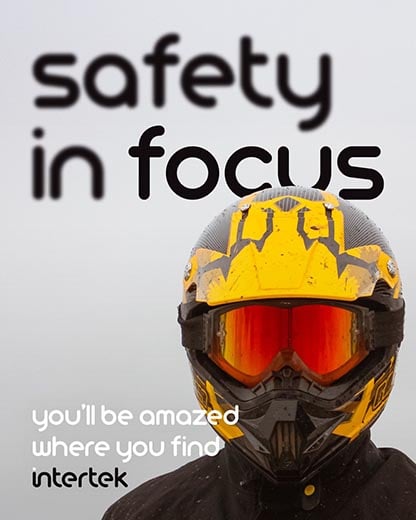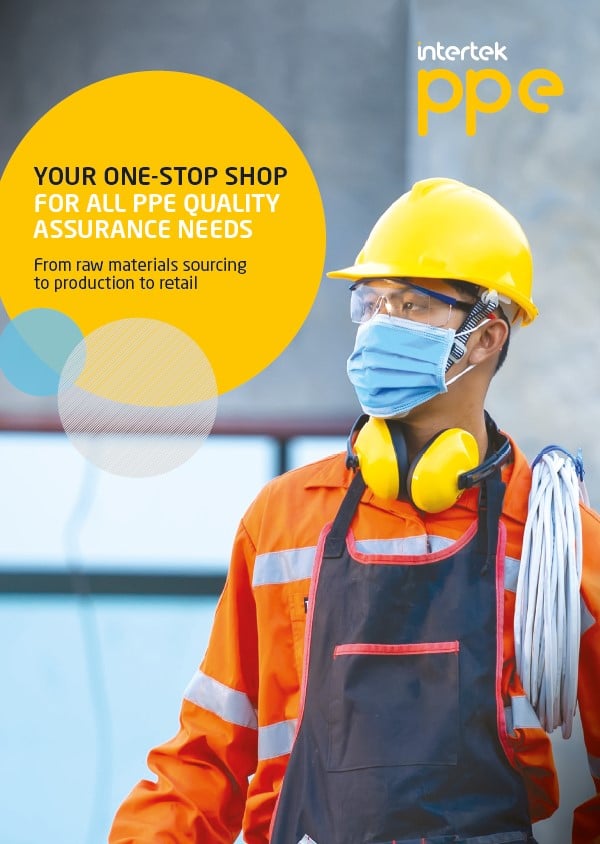"Intertek offers comprehensive protective eyewear testing services, spanning a wide range of products used across professions and recreational activities, with a focus on safeguarding against hazards
From safety goggles to face shields, Intertek offers comprehensive protective eyewear testing for products used in a variety of professions and recreational activities to protect against hazards like bodily fluids, penetration, and perforation injuries.
Intertek’s safety goggle and face shield services include testing and certification to support manufacturers, distributors, and retailers. Our protective eyewear testing capabilities include verifying compliance with various functional, physical, and mechanical requirements such as robustness and protection against droplets and splashes of liquids according to international/national standards.
Our protective eyewear expertise also includes ski goggles, safety glasses, swimming goggles, and swim masks. Intertek is accredited to provide independent testing of safety eyewear for UK/EU, US, and China markets.
What is protective eyewear?
Protective eyewear is designed to protect the area surrounding the eye to reduce the risk of injury. It is made of special pieces of strong glass or plastic in a frame that fits tightly to the wearer’s face. Examples of risks requiring eye protection can include impact from particles, light or radiation, wind blasts, heat, etc. Protective eyewear can be categorized into several types based on the style of eyewear and the targeted hazard, such as face shields and safety goggles.
Face shields and safety goggles that are intended for use as personal protective equipment (PPE) must comply with different standards depending on the market in which they are sold.
Protective Eyewear Compliance Requirements
UK/ EU
In the UK/ EU, protective eyewear is regulated under the PPE Regulation. Usually, protective eyewear is classified as Category 2 PPE, which means that an EU Type examination is required by a Notified Body in the EU (or Type examination to be carried out by the Approved Body in the UK).
The test standard that applies to these products in the UK/ EU is EN 166. Testing to this standard is the first step in the conformity assessment process.
Below is a summary of the key requirements of EN 166:
| EN 166 : 2002 | Test description | Description of requirements |
| Clause 6.1 | General construction | Shall be free from projections, sharp edges or other defects which are likely to cause discomfort or injury during use |
| Clause 7.1.2.1 | Refractive powers | The spherical, astigmatic and prismatic refractive powers shall be within the permissible tolerances according to the relevant optical class 1, 2 or 3 |
| Clause 7.1.2.2 | Transmittance | Luminous transmittance (380 – 780 nm) shall be greater than 74.4% |
| Clause 7.1.4.2 | Increased robustness | The lenses shall withstand the impact of a ⌀22mm steel ball, of 43 g mass, striking the lenses at a speed of approx. 5.1 m/s without lenses fracture or deformation. The housing or frame cannot separate into 2 or more pieces and shall hold the lenses in position |
Once testing to EN 166 has been completed, the conformity assessment body (EU Notified Body or UK Approved Body) can review the test data together with other technical documentation about the product. When the conformity certificate is issued, the importer or distributor may affix the CE Mark for EU (or UKCA Mark for UK) to the product in accordance with the requirements of the PPE Regulation.
USA
In the US, the standard is ANSI/ISEA Z87.1. The tests covered in the ANSI standard are similar to those in the EN standard but with some differences.
Below is a summary of the key requirements of ANSI/ISEA Z87.1 standard:
| ANSI/ISEA Z87.1 : 2020 | Test description | Requirement |
|---|---|---|
| Section 5.1.1 | Optical quality | Lenses shall be free of striae, bubbles, waves and other visible defects which would impair the wearer’s vision. |
| Section 5.1.3 | Haze | Clear plano lenses shall not exhibit more than 3% haze when measured by the apparatus and procedure as described in ASTM D1003. |
| Section 5.2.1 | Drop Ball Impact resistance | The lens shall remain intact with the frame and shall not fracture or have any fragment detached from the surface, or allow the projectile penetrates the inner surface after a ⌀1.0 in steel ball, weighing 68g (2.4 oz) freely dropped from a height of 127cm (50 in.) onto the lens. |
| Section 5.2.2 | Ignition | No ignition or glowing upon the removal of a hot rod (650 °C) in contact with any component of the device for 5 sec. |
Intertek has decades of experience testing and certifying protective eyewear. If you have any quality assurance needs for your protective eyewear, please contact our PPE experts.


